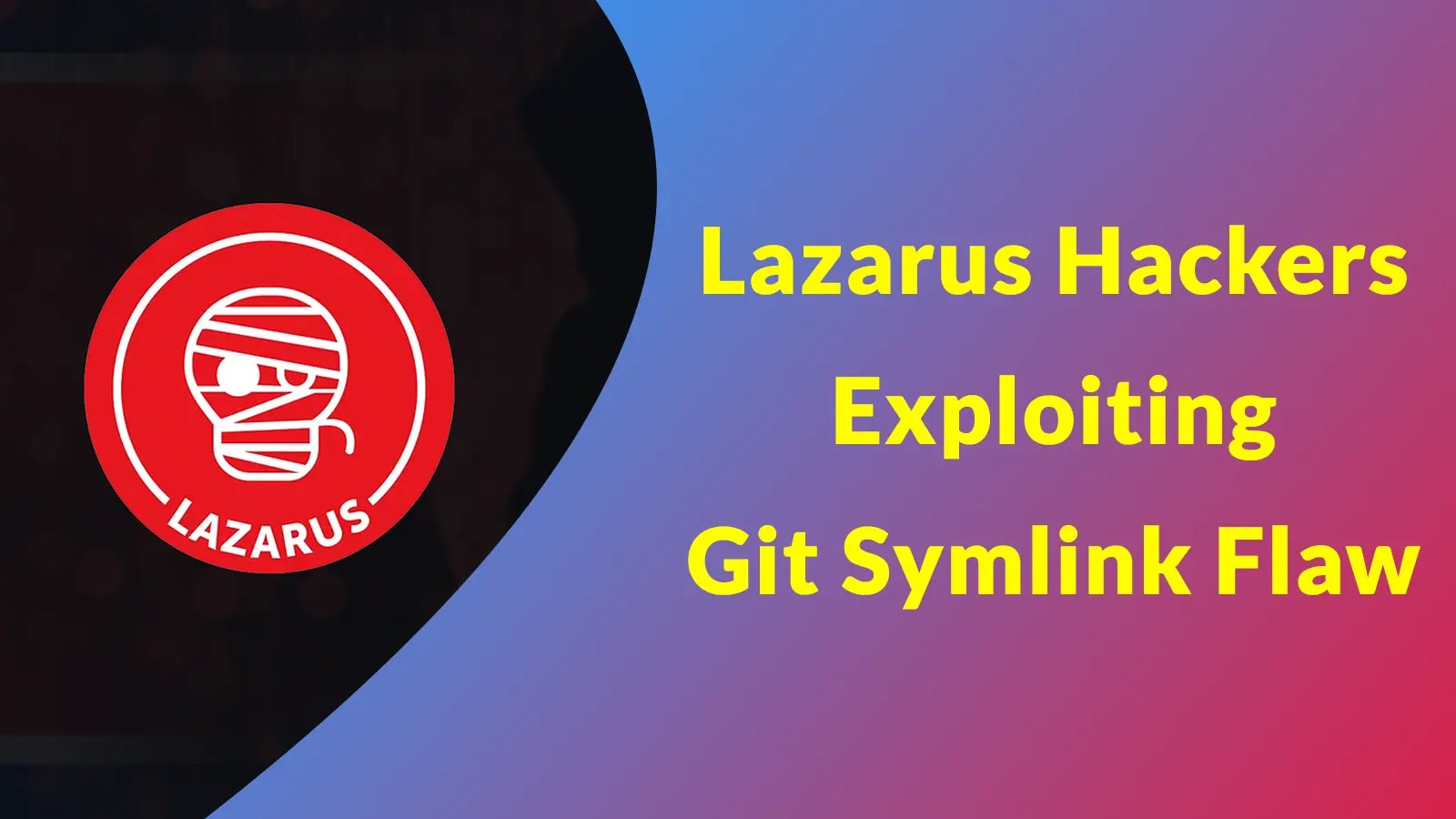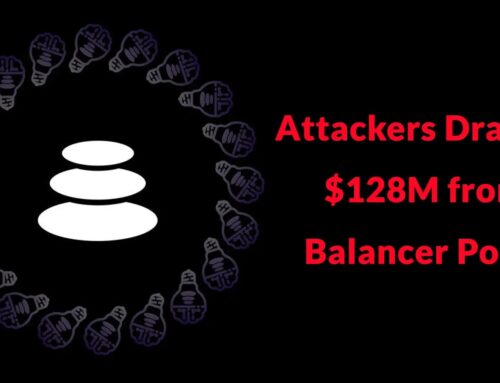
Lazarus Hackers Exploiting Git Symlink Vulnerability in Sophisticated Phishing Attack
The cybersecurity landscape is a relentless battleground, and sophisticated adversaries constantly devise new attack vectors to breach defenses. Among these, the infamous Lazarus Group, known for its audacious and financially motivated cyber operations, continues to evolve its tactics. Recent intelligence reveals a concerning new frontier in their arsenal: a clever exploitation of Git’s symbolic link functionality to orchestrate highly targeted phishing campaigns. This development underscores the critical need for developers and cryptocurrency professionals to understand and mitigate this novel threat.
The Git Symlink Vulnerability: A New Attack Vector
Traditional phishing often relies on malicious attachments or compromised links. However, the Lazarus Group’s latest campaign takes a more insidious approach by weaponizing the very tools developers use daily. They’ve discovered a way to embed malicious hooks within Git repositories by manipulating symbolic links (symlinks).
A symbolic link is essentially a shortcut or a pointer to another file or directory. When Git processes repository paths, it can be tricked into following manipulated symlinks that point to locations outside the intended repository. This allows attackers to execute arbitrary code or exfiltrate sensitive information once a user clones or interacts with a crafted repository. While the specific CVE associated with this exact exploitation method wasn’t immediately made public in the initial reports regarding Lazarus’s campaign, it exploits the inherent trust model and handling of symlinks within Git when not properly secured or when users are tricked into cloning malicious repositories. For general Git vulnerabilities related to path traversal, a relevant example to illustrate the concept, though not directly tied to this exploit, could be CVE-2022-24765, which addresses Git for Windows installer symlink privilege escalation. It highlights the potential for symlink abuse if not handled carefully.
Lazarus Group’s Sophisticated Phishing Mechanics
The Lazarus Group’s approach goes beyond simple malware delivery. Instead, they entice developers and crypto professionals to interact with booby-trapped Git repositories. Here’s a breakdown of their likely methodology:
- Crafted Repositories: Attackers create seemingly legitimate-looking Git repositories, perhaps disguised as open-source projects, development tools, or cryptocurrency-related applications.
- Embedded Malicious Symlinks: Within these repositories, they strategically embed symbolic links. These symlinks, when followed by Git during operations like cloning or pulling, point to malicious scripts or executable files that reside outside the expected boundaries of the repository.
- Targeted Distribution: Phishing emails or direct messages are then used to lure targets into cloning these malicious repositories. The lures are highly customized, appealing to the professional interests of developers and crypto enthusiasts.
- Execution Trigger: When the victim clones or interacts further with the repository (e.g., running `git pull`, `git checkout`), Git’s attempt to resolve the symlink unknowingly triggers the unintended execution of the malicious payload. This could lead to credential harvesting, installation of a backdoor, or direct theft of cryptocurrency.
Why Developers and Crypto Professionals are Prime Targets
Developers frequently download and experiment with various Git repositories, often from unverified sources. This habit, combined with the often high-value assets held by crypto professionals, makes them attractive targets:
- High Trust Environment: Developers inherently trust Git and the code within repositories. This trust is precisely what Lazarus exploits.
- Access to Sensitive Credentials: Developers often have access to source code, API keys, intellectual property, and production environments.
- Financial Incentives: Crypto professionals directly manage digital assets, providing a direct path to financial gain for the attackers.
- Tool Familiarity: The attack leverages a tool integral to their daily workflow, making it less likely to raise immediate suspicion.
Remediation Actions and Best Practices
Mitigating this sophisticated threat requires a multi-layered approach, combining user awareness with technical controls:
For Developers and Individuals:
- Verify Repository Sources: Always scrutinize the origin of any Git repository. Prefer cloning from well-known, trusted platforms and verified user accounts. Avoid cloning repositories linked in suspicious emails or unsolicited messages.
- Inspect Repository Contents: Before running any scripts or executables from a newly cloned repository, manually inspect its contents, especially looking for unusual symbolic links (e.g., symlinks pointing to `/`).
- Use Git’s Built-in Protections: Configure Git to handle symlinks with caution. Ensure your Git client is updated to the latest version, as newer versions often include improved security features.
- Isolate Development Environments: Work with new or untrusted repositories in isolated virtual machines or sandboxed environments to limit potential damage from malicious code execution.
- Strong Authentication: Implement multi-factor authentication (MFA) on all Git platforms (GitHub, GitLab, Bitbucket) and cryptocurrency exchanges.
- Principle of Least Privilege: Grant minimum necessary permissions to development tools and accounts.
For Organizations:
- Developer Training: Conduct regular security awareness training, specifically highlighting this type of Git-based phishing and the dangers of untrusted repositories.
- Static Application Security Testing (SAST): Implement SAST tools to scan internal and external repositories for malicious patterns or suspicious symlinks before they are widely adopted within the development pipeline.
- Code Review Policies: Enforce strict code review policies, where experienced developers inspect all new code and contributions for security vulnerabilities, including potential symlink exploits.
- Endpoint Detection and Response (EDR): Deploy EDR solutions on developer workstations to detect and respond to unusual process execution or file system modifications indicative of a breach.
- Network Segmentation: Isolate development networks from critical production systems to contain potential breaches.
Relevant Security Tools
While no single tool can address all aspects of this threat, the following types of tools can aid in detection, analysis, and prevention:
| Tool Name | Purpose | Link |
|---|---|---|
| GitGuardian | Secret detection in repositories, preventing credentials from being exposed in public or private Git repos. | https://www.gitguardian.com/ |
| Hadolint | Dockerfile linter for best practices and security, useful when repositories involve Docker. | https://github.com/hadolint/hadolint |
| TruffleHog | Scans git repositories for sensitive data and credentials. | https://trufflesecurity.com/ |
| YARA Rules | Malware family identification and classification, can be used to create rules for suspicious file patterns. | https://virustotal.github.io/yara/ |
| Metascan (Opswat) | Multi-scanning for files, including those downloaded in a repository, to detect malware. | https://www.opswat.com/products/filescan |
Conclusion
The Lazarus Group’s exploitation of Git symlink vulnerabilities marks a significant evolution in their attack methodologies, moving beyond traditional malware to weaponize common development tools. This sophisticated approach demands heightened vigilance from developers and cybersecurity professionals alike. By understanding the mechanics of this threat, implementing robust security practices, and leveraging appropriate tools, the industry can collectively strengthen its defenses against these persistent and audacious adversaries. Proactive security, continuous education, and a skeptical eye toward unverified sources are paramount in this evolving threat landscape.





